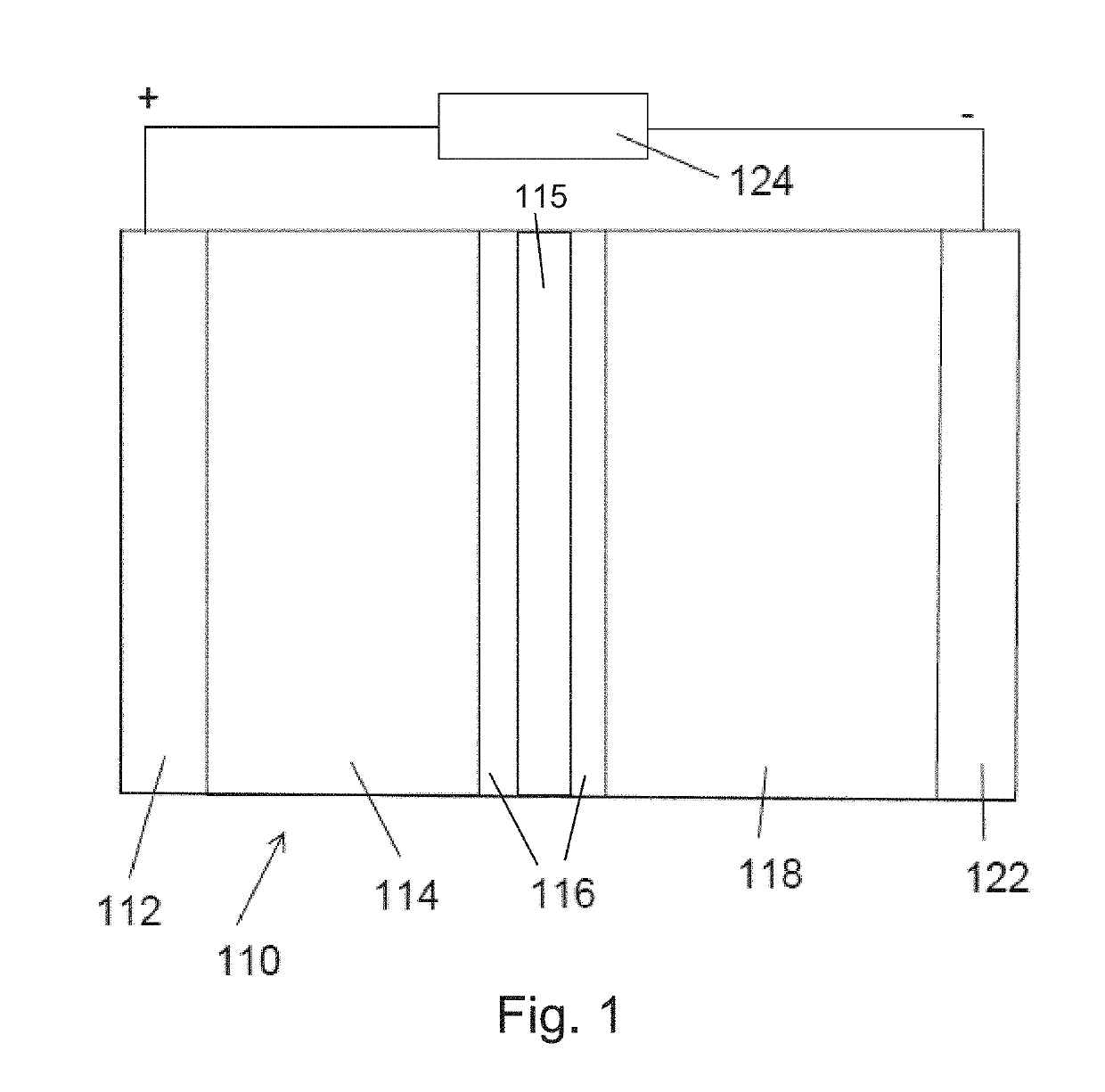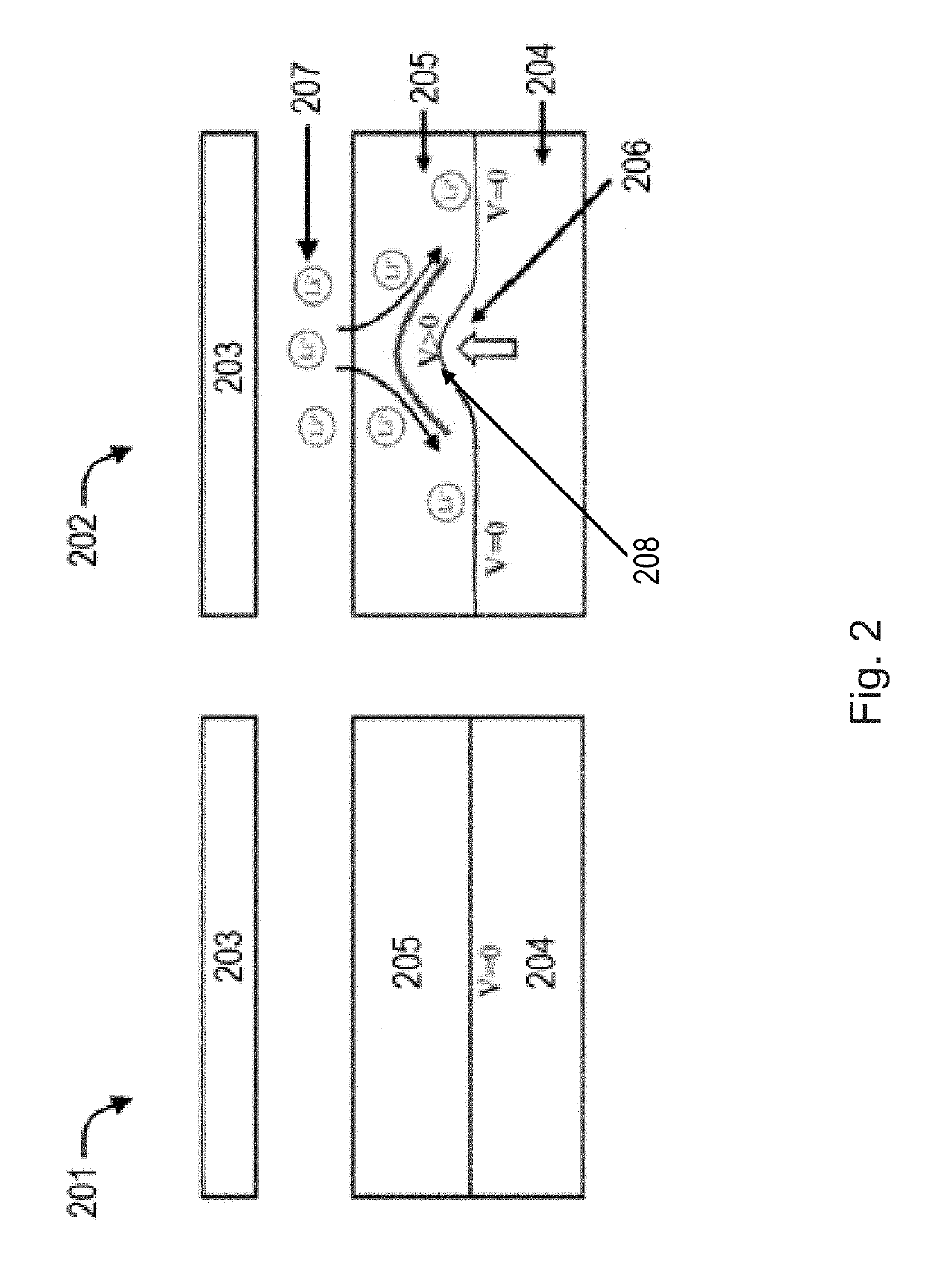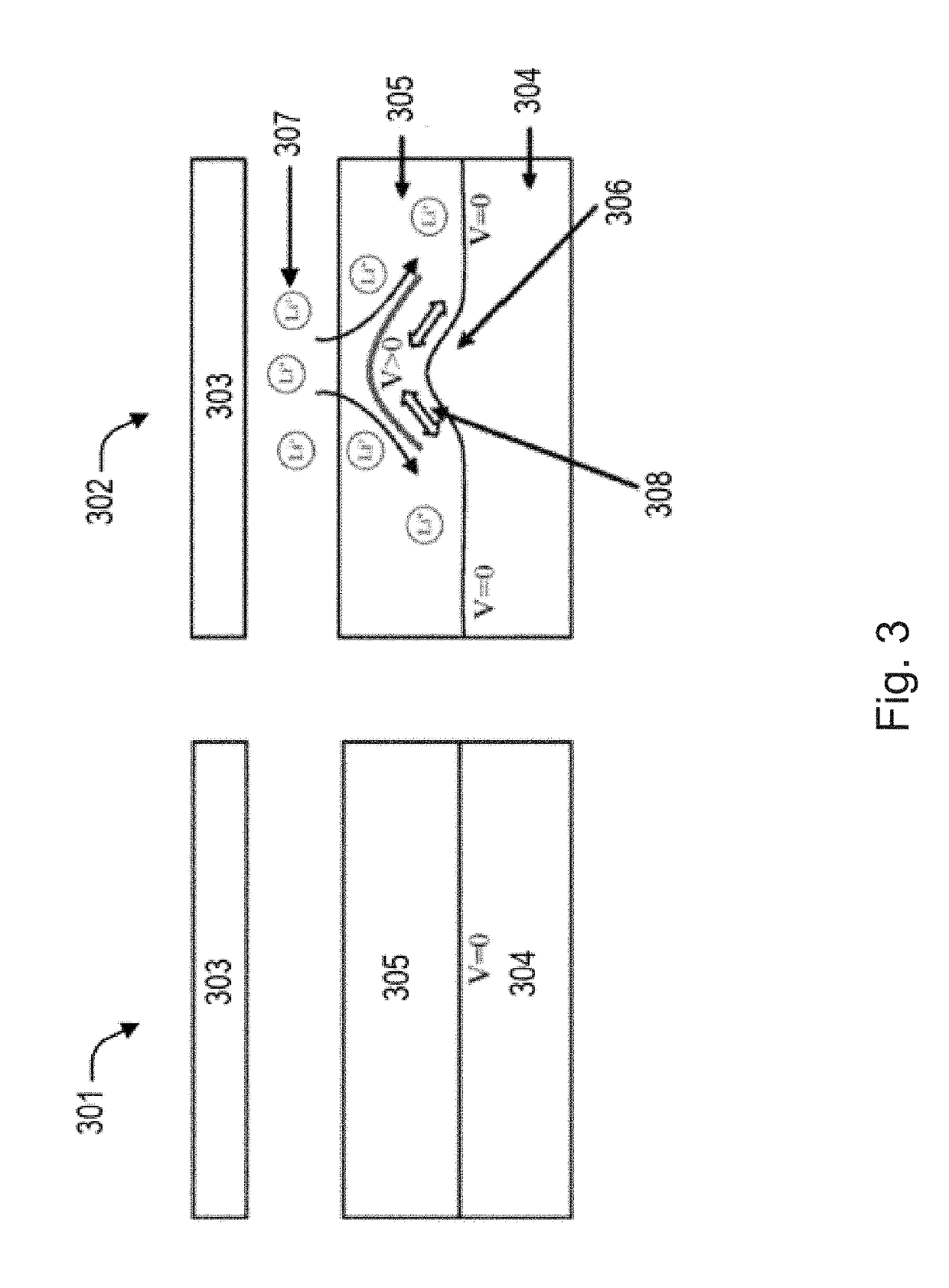Dendrite-Free Lithium Metal Battery by Deformation-Induced Potential Shielding
- Summary
- Abstract
- Description
- Claims
- Application Information
AI Technical Summary
Benefits of technology
Problems solved by technology
Method used
Image
Examples
example 1
[0068]A protective layer of poled polyvinylidene fluoride (PVDF) was placed between an electrolyte and lithium metal anode as shown in the images of FIG. 8. The film thickness of the PVDF was roughly 20 micrometers. When comparing the earlier image (left) and the later image (right), the observed growth of the lithium dendrite over time was in the lateral direction along the surface of the PVDF film. The dendrite did not penetrate the surface of the PVDF film. Therefore, in this specific experiment, it was demonstrated that a piezoelectric film, namely PVDF, was able to reduce dendrite growth in the orthogonal direction.
[0069]Thus, the present invention provides a system and methods for preventing dendrite growth by use of a protective layer in an electrochemical cell. Use of a material or design film with strong piezoelectric effect may completely prevent dendrite formation. The present invention also provides electrochemical cells with self-diagnosis capability, where any dendrite...
PUM
 Login to View More
Login to View More Abstract
Description
Claims
Application Information
 Login to View More
Login to View More - R&D
- Intellectual Property
- Life Sciences
- Materials
- Tech Scout
- Unparalleled Data Quality
- Higher Quality Content
- 60% Fewer Hallucinations
Browse by: Latest US Patents, China's latest patents, Technical Efficacy Thesaurus, Application Domain, Technology Topic, Popular Technical Reports.
© 2025 PatSnap. All rights reserved.Legal|Privacy policy|Modern Slavery Act Transparency Statement|Sitemap|About US| Contact US: help@patsnap.com



